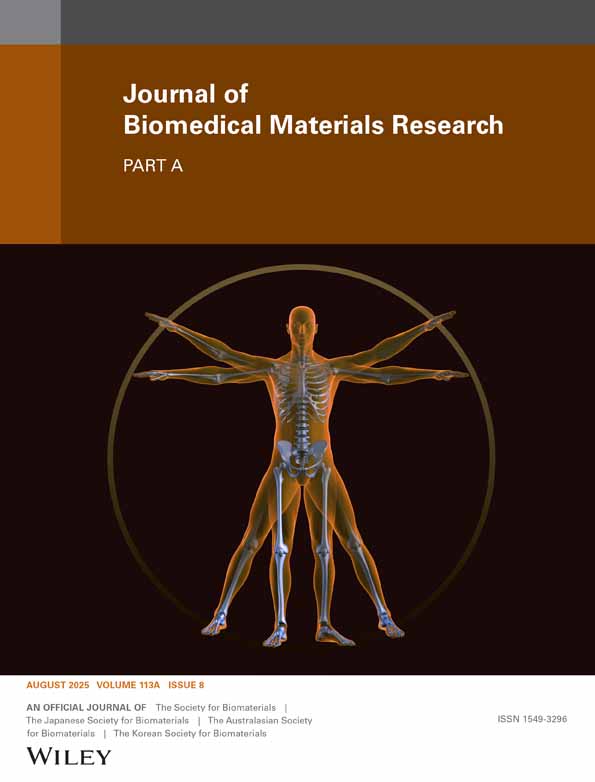Polymeric matrices based on graft copolymers of PCL onto acrylic backbones for releasing antitumoral drugs
Abstract
Graft copolymers of poly(ϵ-caprolactone) (PCL) on poly(dimethylacrylamide) (PDMAm), poly(methylmethacrylate) (PMMA), or on copolymers of poly(DMAm-co-MMA) have been synthesized and characterized by 1H NMR spectroscopy, differential scanning calorimetry (DSC), and size exclusion chromatography (SEC). These partially biodegradable copolymer matrices have been proposed as drug delivery systems for the release of low-molecular-weight glycosides. Octyl-N-acetyl-6-O-[2,2-bis(hydroxymethyl)-3-hydroxypropyl]-α-D-glucosamide, a synthetic carbohydrate able to inhibit the proliferation of human malignant glioma cells in culture and transplanted glioma in rats was selected as drug model. The in vitro aqueous behavior of four drug-loaded and unloaded graft copolymers of different MMA: DMAm and PCL ratios has been analyzed performing swelling, degradation, and drug release experiments. An intimate dependence of the aqueous behavior with the composition has been found. The higher was the DMAm content, the higher was the hydrophilicity of the synthesized systems as well as the swelling, degradation, and drug release rate. In vivo experiments in pigs demonstrated the very good tolerance of drug-loaded implanted polymeric discs, and that >95% of the charged drug is released after 2 months' implantation. © 2003 Wiley Periodicals, Inc. J Biomed Mater Res 64A: 638–647, 2003




